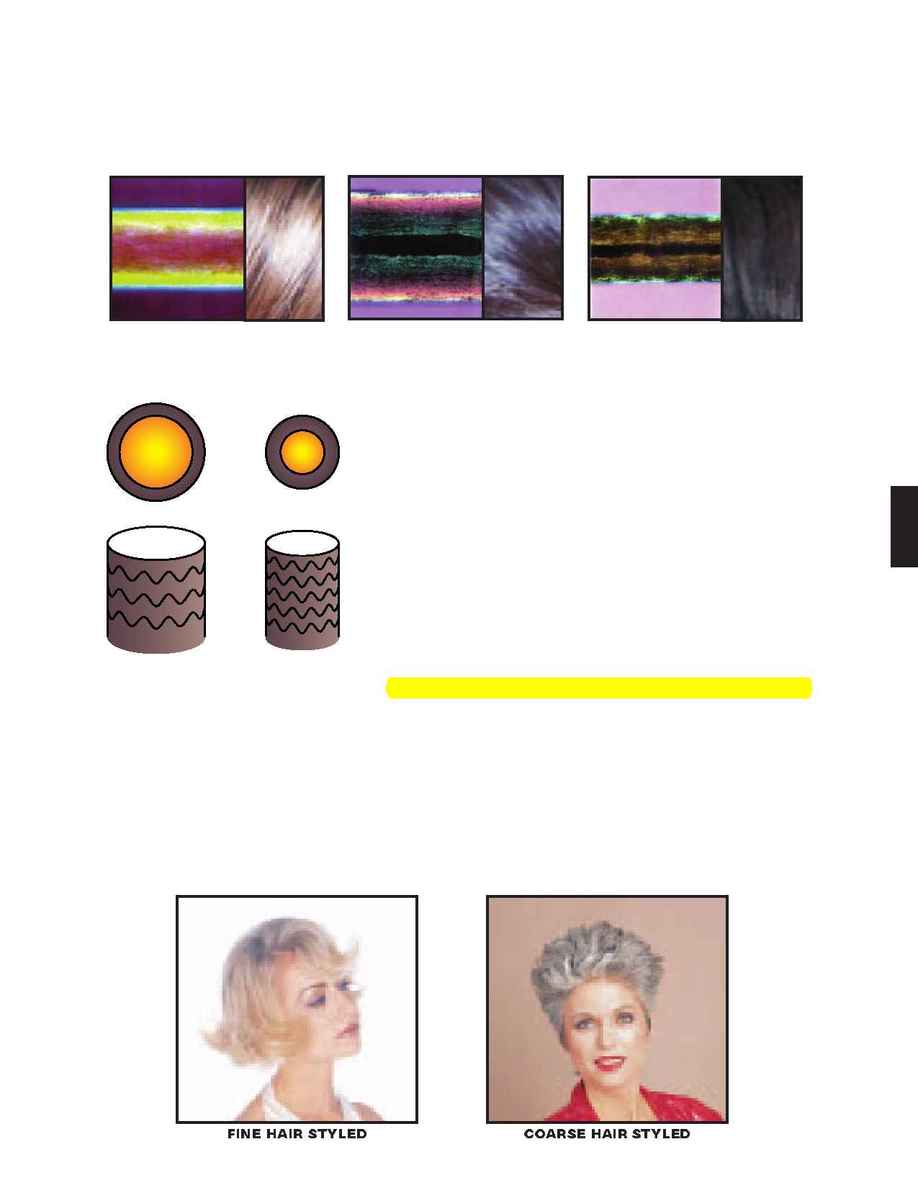
In the next series, observe the difference between Caucasian hair, Asian hair and Afro-centric hair.
Notice that the structural organization of hair as shown by diameter and amount of pigment are very
different among the three races. Keep in mind that diameter and amount of pigment may vary
within each race as well.
One result of genetic coding is the diameter of the hair shaft.
In the picture on the left, notice the cuticle of a cross-sectional
view of fine hair. Next, notice the picture of coarse hair.
As you've already seen, the cuticle is the protective part
of the hair shaft and is made up of a harder protein
than the cortex.
If the hair is fine, treatments will affect it
differently than if it's coarse. Examples include how well the
hair holds a set and how the hair takes a perm or relaxer. It's
an exaggeration to say that fine hair is "all cuticle," but that
is often how it behaves. In cross section, up to 40% of fine
hair can be cuticle, compared with 10% or 12% in coarse hair.
The diameter of coarse hair is much larger than fine hair.
The cuticle is a hard, resistant layer of protein compared with the soft, elastic quality of the
cortex.
If a particular hair is 90% cortex and 10% cuticle, then that hair behaves like the cortex.
That means it has more elasticity and ability to be molded and reshaped. But if the cuticle (which
is harder or firmer and not easily stretched) makes up 40% of the hair fiber, then that hair will
behave more like the cuticle and be more resistant to perms, relaxers or holding a set.
185
7
TRICHOLOGY
FINE HAIR STYLED
COARSE HAIR STYLED
CAUCASIAN
ASIAN
AFRO-CENTRIC
COARSE
FINE
CUTICLE / CORTEX RATIO
